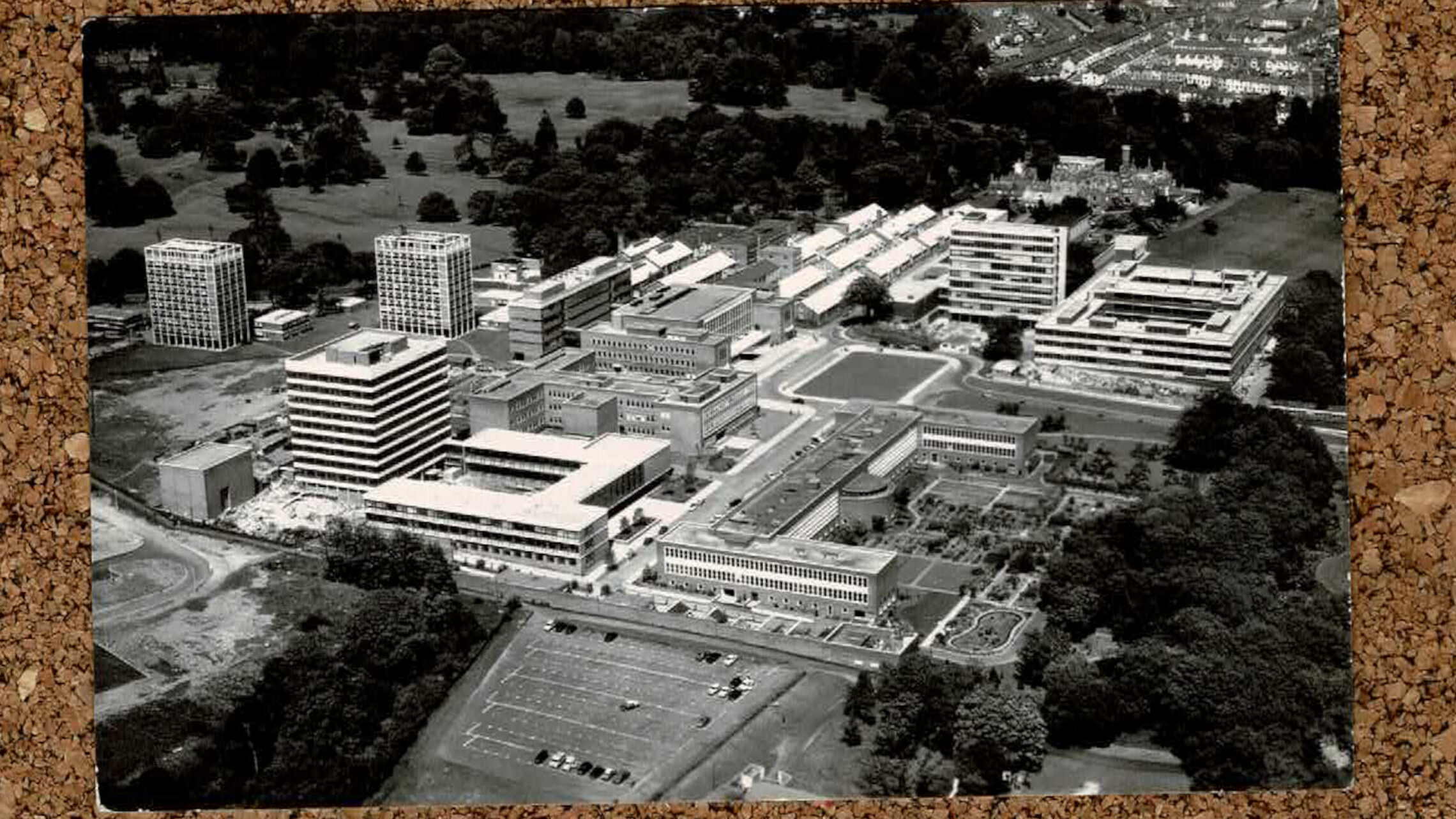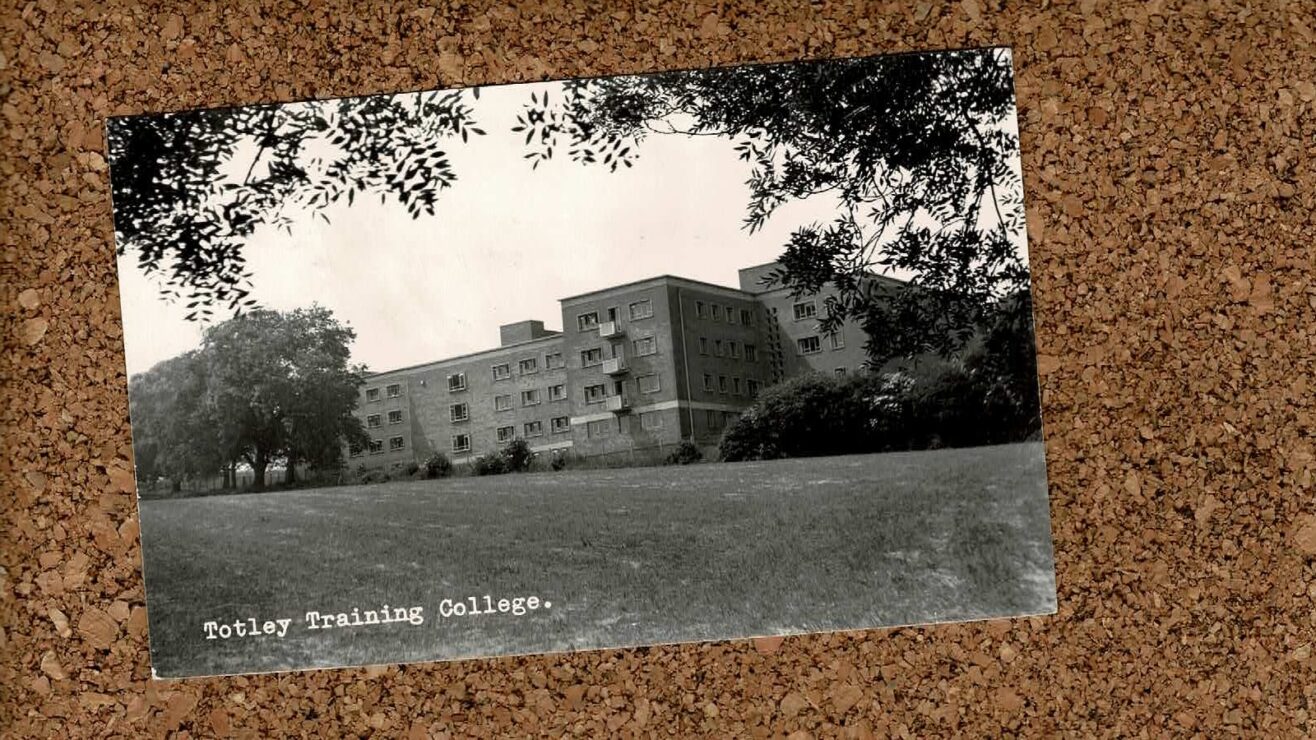Croeso y Abertawe! Welcome to Swansea.
This card shows the Singleton campus of Swansea University. Top right, the abbey which was the university’s original building; beyond that the houses around St Helens (the sports ground where in August 1968 Sir Gary Sobers scored 6 sixes in an over for Nottinghamshire against Glamorgan).
In the foreground the 1950s and 1960s development of the university; to the top left Singleton Park; and to the far left what looks like the construction works of Singleton Hospital. (If so, that would date the image to the 1960s.)
Swansea was formally established in 1920, with the award of a Royal Charter to the then Swansea University College. This didn’t come out of the blue – it was a consequence of a royal commission on university education in Wales, chaired by Lord Haldane, which recommended the establishment of a University College in Swansea.
And rumblings had been going on for longer – for example, in 1902 the Western mail was reporting on a meeting of the Swansea great-and-good which sought a connection between Swansea Technical College and the infant South Wales and Monmouthshire University College (later Cardiff University); and also sought better premises for the Swansea (Teacher) Training College. Swansea as a city wanted and got its seat of higher learning.
Singleton Park, and the Abbey, in which the university sits, were given to the borough of Swansea by John Henry Vivian, the 19th century Swansea copper magnate. The abbey was given to the university in 1923, but other campus developments, by and large, had to wait until after WW2, when a significant building programme was undertaken. The result of this programme is shown in the card. The Singleton campus sits by the sea-front, and is at the edge of Swansea before you get into Mumbles, or onto the Gower peninsula.
The university continues to develop, and in 2015 a second campus was opened on the other side of Swansea, at Crymlyn Burrows. The university thus bookends the City of Swansea; and the straight line from one campus to the other goes over Swansea Bay.
A really good history of the University is Sam Blaxland’s “Swansea University: Campus and Community in a Post-War World, 1945-2020”.
The university has many illustrious names associated with it. And not just academically: Alun Wyn Jones and Siwan Lillicrap, the current captains of the Welsh Men’s and Women’s rugby union sides respectively, are both Swansea graduates.
And my late Aunt Marion and her husband, David Parry, both taught at Swansea. Which therefore has a special place in my firmament.














And, of course, I forgot to write about the University of Wales connection.
Wales had a federal University, established in 1893, the members of which were Aberystwyth, Bangor and Cardiff. University College of Swansea became the fourth member in 1920. And remained a member until 2007, when the University of Wales changed its structure.
This made the University of Wales a club of independent institutions. By an amendment to the Royal Charter, University College of Swansea became Swansea University in September 2007.
The University of Wales has been functionally integrated with Trinity St David’s since 2017
I knew Marion well while an undergraduate (1974-77). She directed me in a production of Lovers’ Vows during my first time. I also well-remember David’s lectures on Middle English and Chaucer. I hope they both lived happily after their, at the time, very unexpected marriage.
Two Manic Street Preachers and one Meacher. There’s a few more Swansea alumni for you.
Nice postcard Hugh. Took a while for me to orient myself as the ‘normal’ view is from the south looking up the main boulevard towards Fulton House. It brought back some happy memories of my office there in Singleton Abbey with a window overlooking the sea…
Nb. Fulton House, built in the early 60s, is to the left of the roundabout on the picture. For those who don’t know it, it is the main social and dining hub for the University. Demolition plans were first considered for it in 1976, but it is still there, which is a great thing!